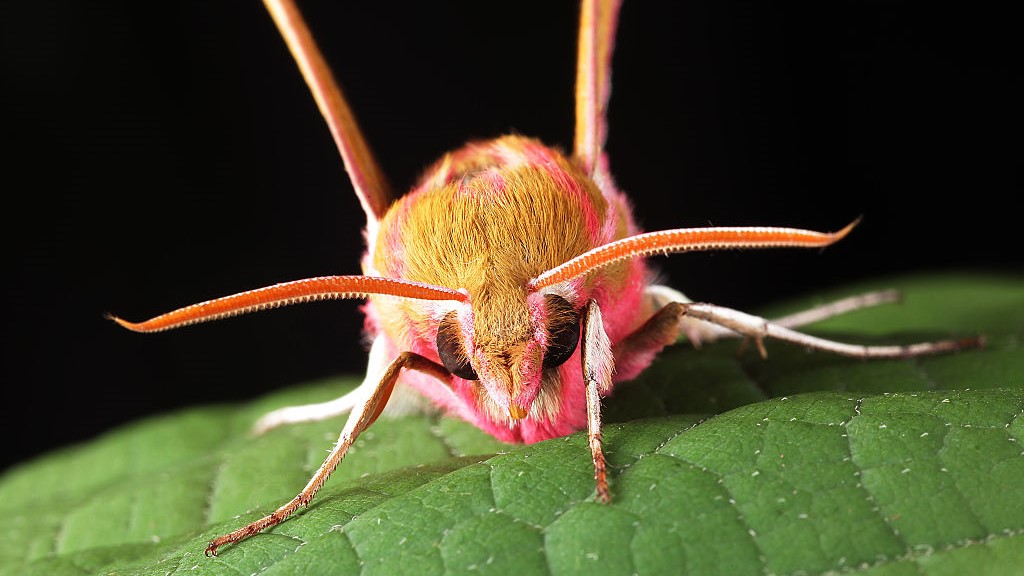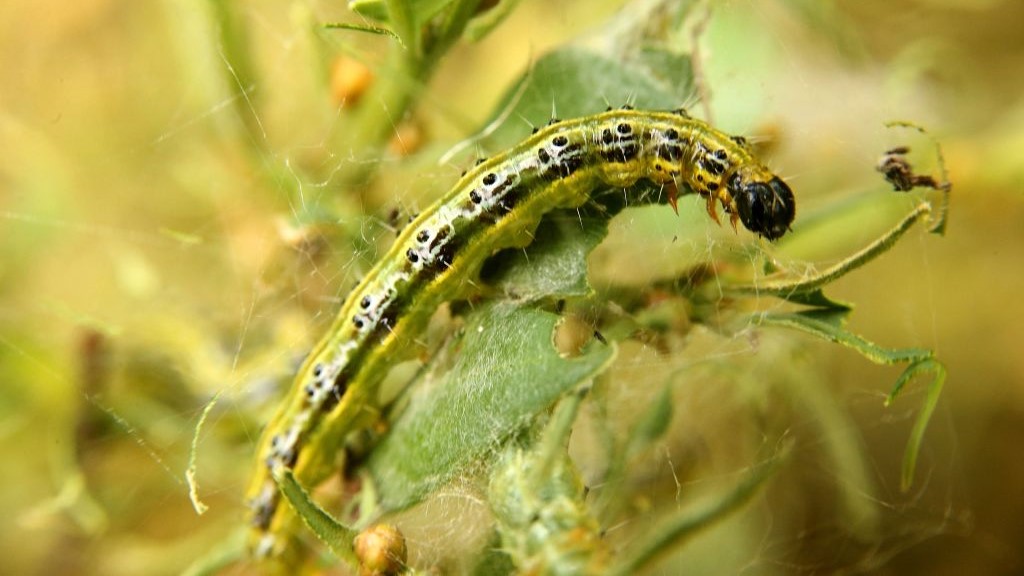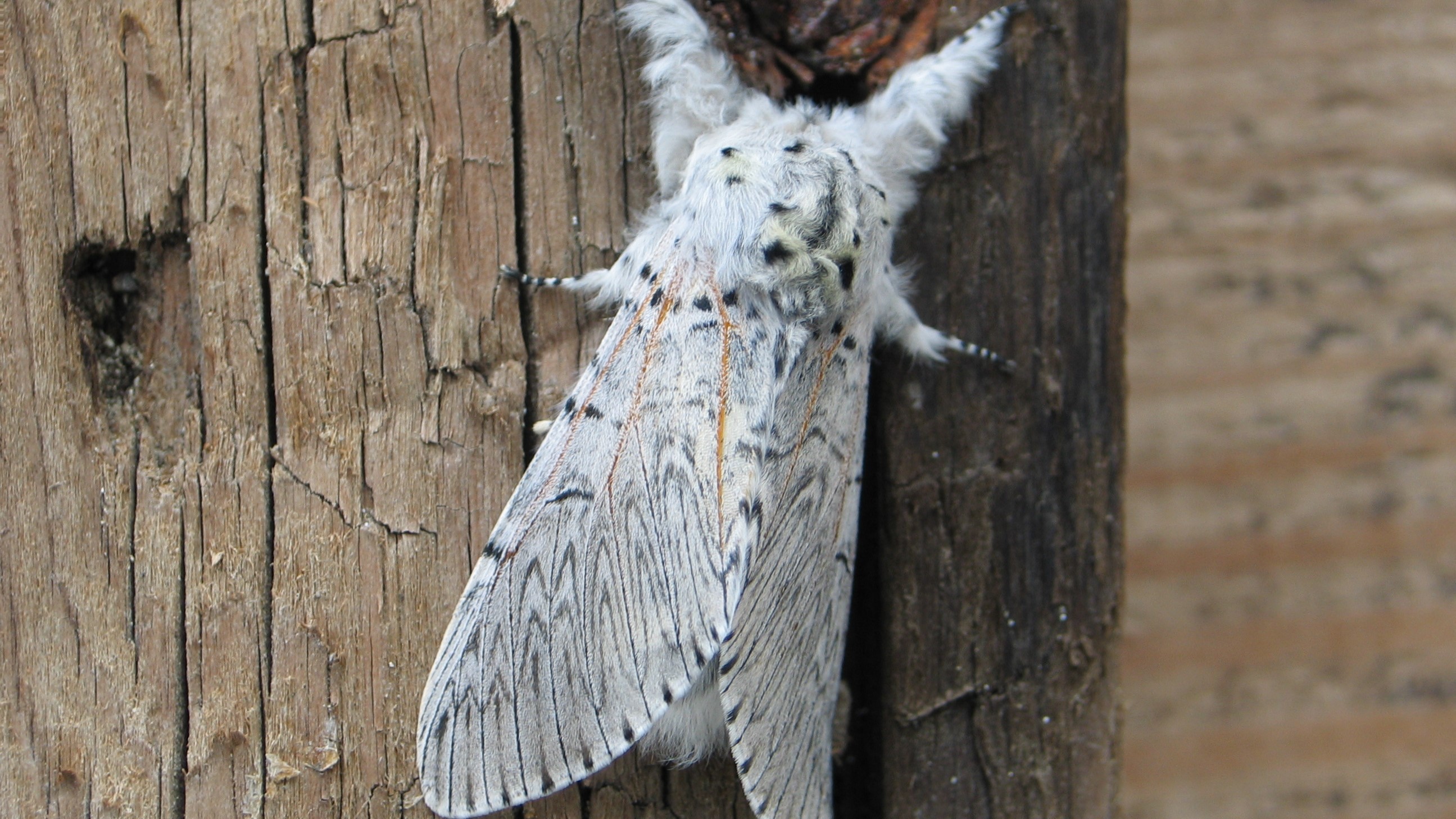Ecologist Tim Blackburn: 'Moths pollinate a wider range of species than bees'
With colors ranging from candy pinks to golds and sometimes possessing wingspans as big as a bird's, moths are a fascinating group. Ecologist Tim Blackburn tells Live Science about the incredible, hidden world of moths.
The content of a small box on his roof terrace in central London has taught ecologist Tim Blackburn more about the natural world than he ever thought possible. Every night, the light-mounted trap attracts winged creatures that perhaps don't get the best publicity — despite making up roughly a ninth of all known animal species on Earth.
Blackburn's new book, "The Jewel Box" (Weidenfeld & Nicolson, 2023) unveils the hidden world of moths, as well as the laws of nature that govern them and all the other creatures on this planet. Inspired by the diversity and beauty of the insects that fall into the eponymous "jewel box" at night, Blackburn, a professor of invasion biology at University College London in the U.K., reflects on 30 years of work as a scientist, taking readers on a journey around the wide web of life.
Shortly after the book's publication on June 8, Blackburn told Live Science about what five years of moth trapping have taught him.
Related: What's the difference between a moth and a butterfly?
Q: Thank you so much for joining me to talk about moths, Tim. Let's start with what first drew you to these insects, because in the introduction to "The Jewel Box," you write that your lifelong obsession is actually birds. What kindled your love for moths?
Blackburn: It was a bit of an accident, really. Ever since I was little, I've been into birds. My mother says before I could talk I would sit in the pram pointing at birds as they flew past. I got into moths partly because I was a bit nature-deprived and didn't really have time to go off looking for birds. Simultaneously, I started to run an undergraduate field course to a place in Scotland where they had a moth trap. It's basically just a box with a light on the top. Moths are attracted to the light and fall into the box. I was just so completely blown away that first morning when I went out to see what that moth trap had conjured out of thin air. The obsession started there.
I started to run a moth trap in London — and again, it conjured up all these incredible creatures out of nowhere. I just got completely hooked. The last five years, I've been obsessively running a moth trap wherever and whenever I can.
Get the world’s most fascinating discoveries delivered straight to your inbox.
Q: It must have been magical to discover that there is such a diversity and abundance of moths in central London — many people wouldn't expect that. When you opened your trap for the first time, was there a moth that particularly struck you?
Blackburn: One that really sticks in the memory is a thing called a tree-lichen beauty [Cryphia algae], which is about the size of my thumbnail. It has a jade cloak, its thorax is often quite bright green, and the wings have this lovely mottled, lichen-like green camouflage. It's a really beautiful little moth that until about 30 years ago was really rare in the U.K. There were literally three records of this moth before 1990 in the U.K., and I had a dozen of them on my roof terrace that first morning.
Q: You've been running the moth trap on your roof terrace for quite some time now. As an ecologist with plenty of experience in the field, have you learned anything surprising in five years of moth trapping?
Blackburn: Every day is a school day. I was constantly surprised by things I was catching that I had no idea were there. There are so many alien moths in the environment — species from Asia, Australia, New Zealand and southern Europe — all occurring together in London, because people have moved them there by accident.
There can be big problems when we introduce a species from one part of the world to somewhere that it has no evolutionary history of association with. The box-tree moth [Cydalima perspectalis] is a classic alien species that we have in the U.K. It was introduced from East Asia and it chews people's box [Buxus sempervirens] hedges down. In the U.K. and through a lot of Europe, we also have natural box woodland and forests, and the moths are really hitting those very hard — killing a lot of trees.
Q: The book is obviously heavily inspired by your moth trap, but that's not all you focus on, and it's packed with stories and anecdotes. What was your aim in writing it?
Blackburn: What I really wanted to write about was how scientists try to understand the natural world, but in a way that was accessible to the general reader. The book really tries to explain the ecological rules of nature — how life organizes itself to produce the diversity of organisms that we see around us in nature… I always say it's not a book about moths, but it's a book illuminated by moths.
Q: Humans have transformed the natural world, and those ecological rules are shifting. What challenges do moths face in this changing environment?
Blackburn: Not only do we switch natural vegetation to crops, which takes away habitat from species, but we then spray those crops with pesticides to stop insects from eating them. Those pesticides spread across the environment, which has a big impact on insects and moths.
For moths, there's the additional issue of light pollution, because they're nocturnal. Having light in the environment 24 hours a day disrupts developmental processes and feeding. We're also seeing large-scale shifts in the distribution of species as they track changes in the climate. Species living in cooler environments or at higher elevations are getting squeezed out as we push temperatures beyond the limits that organisms can cope with.
Q: Do moths play an important ecological role?
Blackburn: Moths are fantastic pollinators, and we've only discovered this recently because we're not nocturnal. When the sun goes down, the pollinator shift changes and the moths take over from bees and hoverflies. Moths pollinate a wider range of species than bees, and they're more efficient pollinators.
Essentially, moths sit squarely in the middle of the web of life on Earth: They pollinate plants and consume plants, and they're consumed by birds, mammals, bats, spiders, parasitoid wasps — all sorts of things. When you think that 1 in 9 species of animal that we know is a moth, it's kind of remarkable. They really hold together our natural system.
Q: In the introduction to the book, you write that you are "obsessive" about identifying moths. Why is it so important to name species?
Blackburn: One of the stories I tell towards the end of the book is about a species of moth that was only described in 2017. I catch it on my terrace, and it's quite an unprepossessing little thing. But for years, people thought it was a thing called the peach twig borer [Anarsia lineatella] that is considered a pest, because it bores into fruit like peaches and apricots.
When some of these moths appeared in Denmark, in an area where they grow a lot of soft fruit, growers were really concerned and considering large-scale pesticide applications to try and stop this species in its tracks. It turns out that two species had been lumped together and the one that colonized Denmark actually feeds on maple rather than fruit trees. They were going to spray all these crops with pesticides to deal with a problem that wasn't a problem at all. If you don't know what you're dealing with, it can lead to fundamental mistakes in how you respond to species.
Q: What do you wish more people knew about moths?
Blackburn: People think that they're little brown things that hide away at night and aren't really that exciting. Some of them eat your cardigans and carpets, so that doesn't go down well. Because we don't see them, we don't realize this incredible diversity and how beautiful they are. When you start running a moth trap, there's these bright red creatures and bright greens and yellows, candy pink and gold. Some of them have the wingspan of a small bird. They are absolutely gorgeous, and that's where the title "The Jewel Box" comes from: They're these incredible insect jewels, and people should get to know them and love them.
The Jewel Box: How Moths Illuminate Nature’s Hidden Rules - $20.42 at Amazon
A plastic box with a lightbulb attached may seem like an odd birthday present. But for ecologist Tim Blackburn, a moth trap is a captivating window into the world beyond the roof terrace of his London flat. Whether gaudy or drab, rare or common, each moth ensnared by the trap is a treasure with a story to tell. In The Jewel Box, Blackburn introduces these mysterious visitors, revealing how the moths he catches reflect hidden patterns governing the world around us.

Sascha is a U.K.-based staff writer at Live Science. She holds a bachelor’s degree in biology from the University of Southampton in England and a master’s degree in science communication from Imperial College London. Her work has appeared in The Guardian and the health website Zoe. Besides writing, she enjoys playing tennis, bread-making and browsing second-hand shops for hidden gems.








